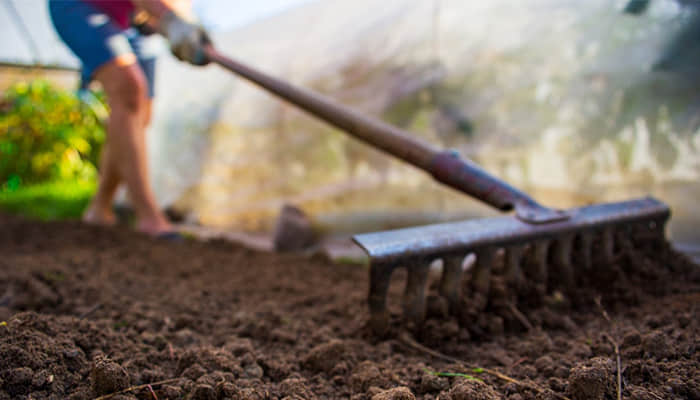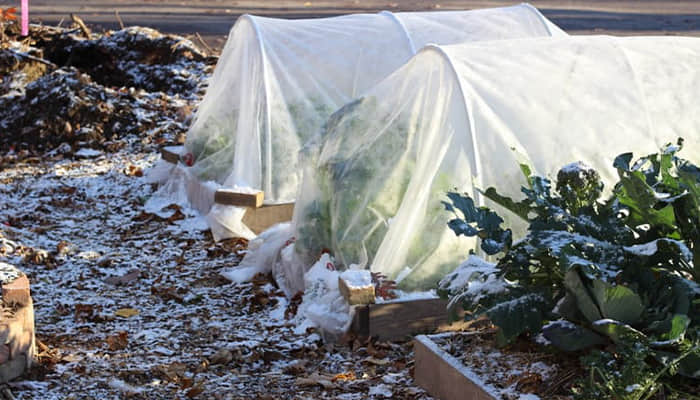Beginner-Friendly Plants for Spring Sowing and Practical Tips
Spring is the ideal season to start planting new plants. Whether you’re setting up a home vegetable garden or a flower bed, it’s best to begin with the easiest plants to grow. As you successfully witness a plant’s life cycle, from germination to flowering, fruiting, and wilting, you’ll gain confidence and basic knowledge to care for more challenging plants.
We’ve compiled a list of beginner-friendly plants suitable for spring sowing, along with tips and tricks to help you embark on your gardening journey.
Tips For Early Preparation

1. Soil Preparation
Before planting, ensure the soil is fully thawed and has been properly tilled. Adding organic matter can improve soil fertility. Beginners can start with bone meal (to promote root growth and flowering) and fish meal (which contains various nutrients like nitrogen, phosphorus, and potassium needed by plants).

2. Frost Protection
Prepare frost protection covers for late spring to safeguard against unexpected frost. Cover plants before sundown to trap the stored heat from during the day. If you wait to cover it until after nightfall, the heat may have dissipated. There are two types of covers that are suitable for beginners.
- Floating Row Covers: These are lightweight, transparent plastic films commonly used to protect seedlings and flowering plants.
- Plastic Buckets: For smaller plants like seedlings, inverted plastic buckets can provide protection.
3. Planting Timing
Use the “countdown method” to determine planting dates. For example, if a plant needs 60 days to mature and you want to harvest by July 1st, you should plant around April 1st. Or check out the planting calendar which you can get on search engines.
4. Seed Starting
For plants that need to be started indoors, ensure you sow seeds a few weeks before the last expected frost date.
Vegetables
The following vegetables are well-suited for spring sowing and are easy to grow. You can sow them as soon as the soil thaws.

1. Lettuce
- Germination conditions: Temperature between 65-75°F (18-24°C), soil should be moist.
- Preferred fertilizer: Nitrogen-rich fertilizer.
- Maturity time: Approximately 45-60 days.

2. Carrots
- Germination conditions: Temperature between 45-85°F (7-29°C), soil should be moist.
- Preferred fertilizer: Phosphorus-rich fertilizer.
- Maturity time: Approximately 60-100 days.

3. Peas
- Germination conditions: Temperature between 40-75°F (4-24°C), soil should be moist.
- Preferred fertilizer: Balanced fertilizer with nitrogen, phosphorus, and potassium.
- Maturity time: Approximately 60-90 days.

4. Radishes
- Germination conditions: Temperature between 40-75°F (4-24°C), soil should be moist.
- Preferred fertilizer: Phosphorus-rich fertilizer.
- Maturity time: Approximately 30-60 days.
Flowers
Violas, Marigolds, Tulips, and Daffodils typically prefer cooler environments and are not fond of high temperatures. They usually bloom in the spring, making them low-maintenance plants that add a vibrant splash of color to your garden.

1. Violas
- Germination conditions: Temperature between 65-75°F (18-24°C), soil should be moist.
- Preferred fertilizer: Balanced fertilizer, avoid excessive nitrogen-rich fertilizer.
- Blooming Time: Generally from spring to early summer.

2. Marigolds
- Germination conditions: Temperature between 65-75°F (18-24°C), soil should be moist.
- Preferred fertilizer: Balanced fertilizer, avoid excessive nitrogen-rich fertilizer.
- Blooming Time: Generally from spring to early summer.

3. Tulips
- Germination conditions: Temperature between 40-60°F (4-15°C), soil should be moist.
- Preferred fertilizer: Fertilizers rich in phosphorus and potassium, such as bone meal.
- Blooming Time: Usually in spring, especially in late spring (around April to May).

4. Daffodils
- Germination conditions: Temperature between 40-60°F (4-15°C), soil should be moist.
- Preferred fertilizer: Fertilizers rich in phosphorus and potassium, such as bone meal.
- Blooming Time: Usually in spring, particularly in early spring (around March to April).
Overall Tips
- Choose short-day varieties suitable for spring sowing.
- There’s no strict standard for watering frequency. Observe the soil’s moisture; it should feel slightly damp, but never too wet.
- These plants can all benefit from bone meal and fish meal, but fish meal provides a more balanced mix of nutrients. For simplicity, you can use only fish meal. Typically, use about 100g to 200g of fish meal per square meter of soil. Mix the fish meal with the soil before planting or when planting, or dig holes around the plants and sprinkle the fish meal in, then cover with soil.
- Avoid using chemical fertilizers in the soil, as they may burn the roots.
